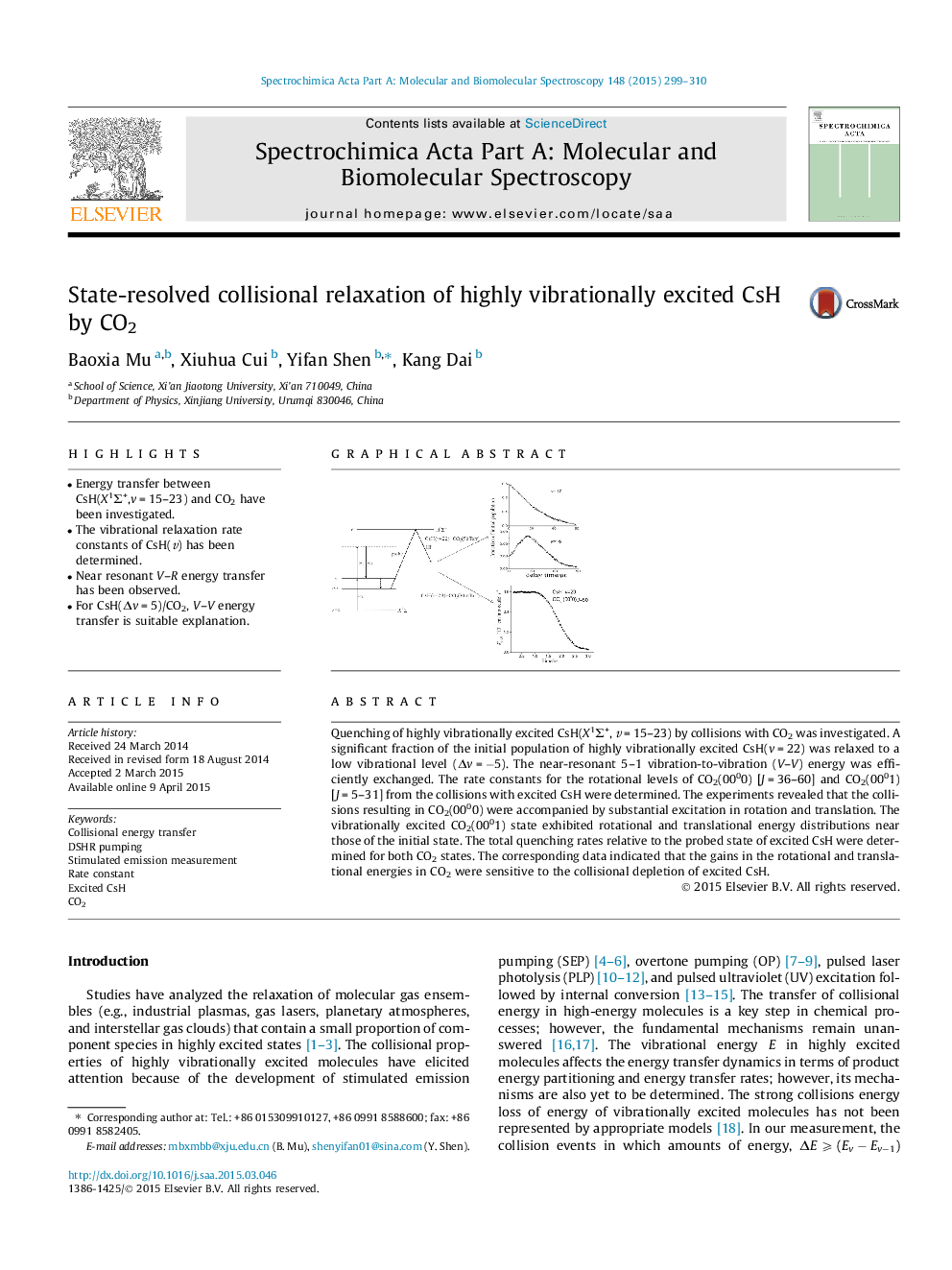| کد مقاله | کد نشریه | سال انتشار | مقاله انگلیسی | نسخه تمام متن |
|---|---|---|---|---|
| 1232130 | 1495221 | 2015 | 12 صفحه PDF | دانلود رایگان |

• Energy transfer between CsH(X1Σ+,v = 15–23) and CO2 have been investigated.
• The vibrational relaxation rate constants of CsH(v) has been determined.
• Near resonant V–R energy transfer has been observed.
• For CsH(Δv = 5)/CO2, V–V energy transfer is suitable explanation.
Quenching of highly vibrationally excited CsH(X1Σ+, v = 15–23) by collisions with CO2 was investigated. A significant fraction of the initial population of highly vibrationally excited CsH(v = 22) was relaxed to a low vibrational level (Δv = −5). The near-resonant 5–1 vibration-to-vibration (V–V) energy was efficiently exchanged. The rate constants for the rotational levels of CO2(0000) [J = 36–60] and CO2(0001) [J = 5–31] from the collisions with excited CsH were determined. The experiments revealed that the collisions resulting in CO2(0000) were accompanied by substantial excitation in rotation and translation. The vibrationally excited CO2(0001) state exhibited rotational and translational energy distributions near those of the initial state. The total quenching rates relative to the probed state of excited CsH were determined for both CO2 states. The corresponding data indicated that the gains in the rotational and translational energies in CO2 were sensitive to the collisional depletion of excited CsH.
Figure optionsDownload as PowerPoint slide
Journal: Spectrochimica Acta Part A: Molecular and Biomolecular Spectroscopy - Volume 148, 5 September 2015, Pages 299–310